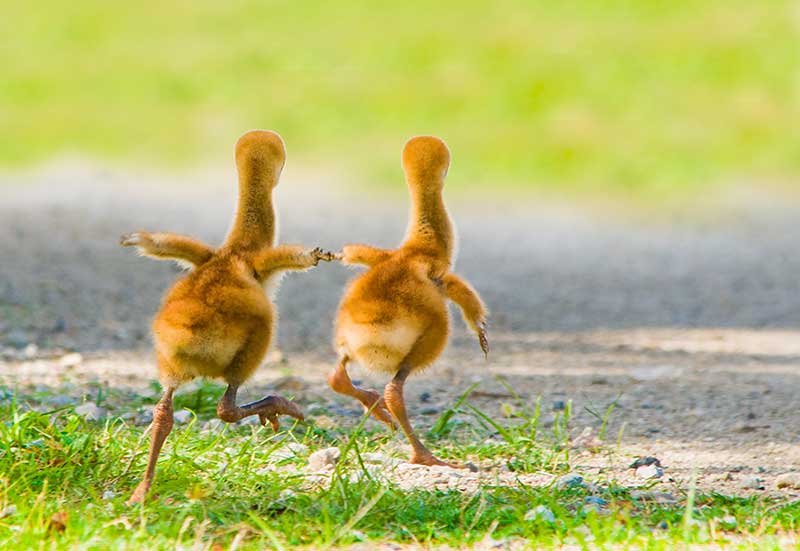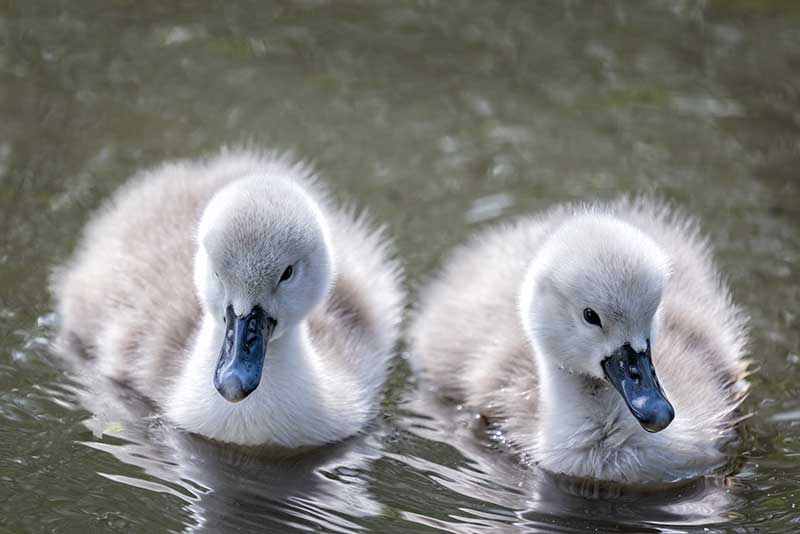
[ad_1]
By the 14th century, chicken became the standard word to describe a single Gallus gallus domesticus of any age and sex, and an ‘s’ was added to denote the plural. At around the same time, chicken began to be used to mean the bird’s meat too, as mentioned in The General Prologue of Chaucer’s The Canterbury Tales. ‘A cook they hadde with hem for the nones, To boille the chiknes with the marybones’, meaning ‘A cook they had with them, just for the nonce, To boil the chickens with the marrow-bones’. Nonce in this case meant ‘for a single purpose’, as in nonce-words, and the spelling likely came about due to a rebracketing of the phrase ‘then anes’. Then in Middle English was the definite article.
Although fowl remained in use for some time and is still used in terms like waterfowl, it dropped out of mainstream use at the beginning of the 20th century. A quote from the Western Gazette in 1908 declares, “It is a disastrous betrayal of middle-class origin to speak of a ‘chicken’ as a ‘fowl’. Whatever the age of the bird, the word must always be chicken.”

Crane – colt because baby cranes have long legs and can run soon after hatching (apparently, they look a bit like a baby horse, the male of which is also called a colt).
Dove – peeps, pipers, squeakers, squealers – due to their almost incessant cheeping when they are young – and squabs. Although the etymology of squab is not clear, it has been used since the 1600s to describe a young bird, and prior to that was a term for a short, plump person.
Duck – duckling. In Old English, the suffix -ling was simply added to another word to turn it into a noun. For example, ‘sib’ meant kinship, so a sibling was a blood relative, ‘darling’ came from ‘dear-ling’, and ‘underling’ referred to a subordinate, literally meaning someone who was ‘under’ someone else.
It was only in Middle English, that -ling started to become associated with smallness and babies, which is why we have words today like foundling, suckling, and duckling, as well as hatchling, nestling, and fledgling.
Eagle – eaglet. Like the suffix – ling, -let was added to words to indicate they were diminutive nouns. It is originally from the French -ette, which was added to nouns ending in -el. It became particularly popular in the 18th century when all sorts of new words were created such as piglet, starlet, and ringlet.
Falcon – eyas. Again, this is from a French word, niais or neias meaning ‘caught-from-the nest’. Middle English speakers mishead ‘a neias’ as ‘an eias’ and eventually the initial n- was lost from neias until it morphed into eyas. The change in spelling is similar to how aerie (referenced in Shakespeare’s Richard III ‘Our aerie buildeth in the cedar’s top’), become eyry.
Other examples of words that lost their initial ‘n’ include apron, adder, orange, and (h)umble-pie.
Although eyas is a term usually reserved for young birds used in falconry it can refer to the young of any nesting falcon or hawk.
Goose – gosling (see explanation for duckling)
Grouse – cheeper, squealer (see explanation for dove)
Guineafowl – keet, or guinea-keet, due the sound the young make.
Loon – loonet (see explanation for eaglet)
Owl – owlet (see explanation for eaglet)
Peafowl – peachick to complete the family along with peahen and peacock.
Pigeon – peeps, pipers, squeakers, squealers, squabs (see explanation for dove)
Puffin – puffling (see explanation for duckling) Interestingly, puffin (from puffed meaning ‘swollen’) was originally used to describe the cured, fatty meat of nestling Manx shearwaters which was a delicacy from the 14th to 19th centuries.
Manx shearwaters have retained the scientific name Puffinus puffinus, and puffins only acquired their name in the 19th century perhaps due to their similar nesting habits to shearwaters.
Sandpiper – peep, due to the sound the young make.
Stork – storkling (see explanation for duckling)

Swan – cygnet or flapper. Cygnet is the diminutive of the Old French word cigne meaning ‘swan’. We assume flappers is due to the habit of young swans flapping their wings.
Turkey – the young male is called jake, and the young female is called jenny, and we have no idea why, although it may be due to the fashion of the 15th century to give animal species human names.
.
[ad_2]






